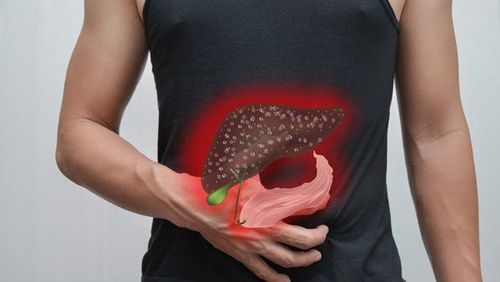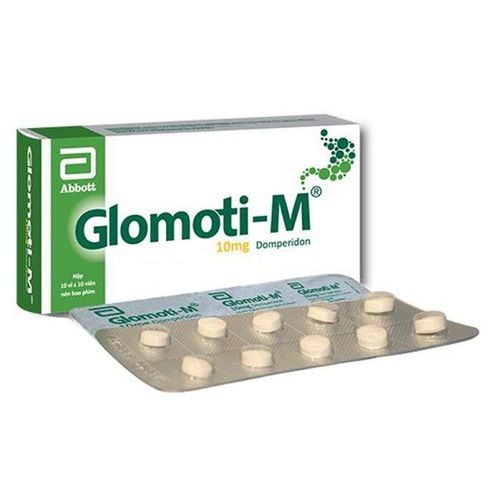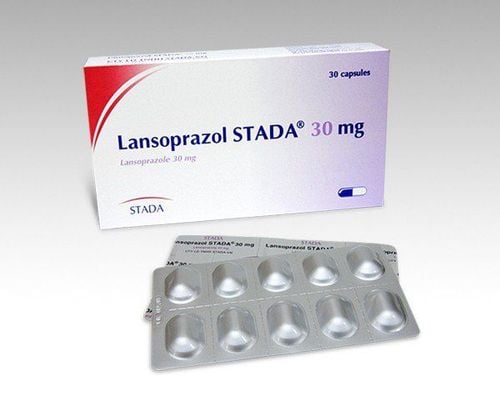This is an automatically translated article.
The article is professionally consulted by Specialist Doctor I Le Thien Quang - Internal Oncologist - Department of Medical Examination & Internal Medicine - Vinmec Danang International General Hospital. The doctor has more than 15 years of experience in the field of examination and diagnosis of oncological diseases and treatment modalities of radiation therapy, chemotherapy, targeted therapy and palliative care.In the early stages, esophageal cancer often has few symptoms. However, as the tumor grows larger, the expression will also become more obvious. In particular, the majority of patients with esophageal cancer have symptoms of difficulty swallowing, choking when swallowing.
1. What is choking (difficulty swallowing)?
Dysphagia is the medical term for difficulty in performing the act of swallowing. This symptom is often caused by disease in the esophagus or disease in the oropharynx or by compression on the esophagus. Therefore, there are many causes of dysphagia, and so are many, including esophageal cancer.The degree of difficulty in swallowing also varies from person to person and at each stage of the disease. In mild cases, the patient can swallow food through the esophagus gently with pain when swallowing. When the condition is more severe, when both solid food and liquid pass through the esophagus can cause vomiting, the patient cannot eat or drink.
Swallowing may occur at the same time as other symptoms such as nausea, vomiting, cough, difficulty breathing.
2. What is esophageal cancer?
Esophageal cancer is cancer that occurs in the esophagus — the part of the digestive tract that connects the pharynx and the stomach. With esophageal cancer, patients often have symptoms of difficulty swallowing and weight loss. In addition, there are other symptoms such as pain when swallowing, hoarse voice, dry cough, possibly vomiting or coughing up blood. Esophageal cancer is divided into two main types: squamous cell carcinoma (ESCC) - arising from the epithelial cells of the esophagus (common form) and adenocarcinoma (EAC) - arising from the cells of the esophagus. Glandular cells are present in the lower part of the esophagus, where they have transformed into intestinal cells (a condition known as Barrett's esophagus).Causes of squamous cell esophageal cancer include tobacco, alcohol, very hot drinks, inadequate diet, and chewing betel nut. The most common causes of esophageal adenocarcinoma are smoking, obesity and gastroesophageal reflux syndrome.
Diagnosis is based on endoscopic biopsy (a system of optical endoscopes). Preventive measures include stopping smoking combined with a healthy diet. Treatment is different based on the stage, the location of the cancer, and the individual's general health.
Small squamous cell carcinoma in situ may have the hope of a complete cure. In most other cases, the treatment is chemotherapy with/without radiation followed by surgery to slow the growth of the tumor. When the disease becomes more complicated or the patient is not healthy enough to undergo surgery, palliative care is the last resort.
3. Swallowing - a sign of esophageal cancer
Symptoms of choking or difficulty swallowing are symptoms that are easily felt and seen in most patients with esophageal cancer. Initially, patients often present with difficulty swallowing but do not feel pain. As the disease worsens, difficulty swallowing is accompanied by pain. At first, the patient only had difficulty swallowing with solid food, later on, it was difficult to swallow even liquid food, even swallowing saliva was painful.The first symptom of esophageal cancer is usually mild difficulty swallowing and painful swallowing. After that, the disease gradually got worse over time. Therefore, the disease needs to be diagnosed as soon as possible to increase the chances of cure and recovery.
4. Other warning signs of esophageal cancer
Frequent salivation accompanied by bad breath, belching, choking when eating. Some cases will feel uncomfortable when eating, feeling like choking. At the same time, as the cancer cells spread, the patient will also feel more chest pain. The patient experienced marked weight loss, dehydration, and gradual exhaustion due to inability to eat and swallow. Anemia is mild and occurs slowly. Sometimes there are signs of massive bleeding, when cancer cells have entered the aorta, which can cause esophageal bleeding, causing sudden death. Patients often have sore throat or back, behind the sternum or two shoulder blades. Severe illness, patients may appear sore throat, prolonged cough, even coughing up blood. Frequent feeling of vomiting, nausea. Other symptoms may be encountered when the tumor grows such as severe pain, feeling of entanglement in the throat, shortness of breath, sputum, hoarseness, ...
5. What should the patient do when he has difficulty swallowing?
Patients should seek medical attention when having symptoms of difficulty swallowing. However, just relying on disease symptoms (typically choking, difficulty swallowing) is not enough. The diagnosis of esophageal cancer is also based on imaging tests and other laboratory tests. For an accurate diagnosis of esophageal cancer, patients need to undergo endoscopy combined with ultrasound and biopsy.Esophageal X-ray: The patient is prepared in the lying position. If the patient has esophageal cancer, the X-ray may show a hardening of the esophagus; image of narrowing of the esophagus; see tumor images. Computed tomography (CT): This method is more accurate than X-rays, especially when cancer cells have spread into the wall of the esophagus. In addition, this method can also detect whether the tumor has metastasized to the mediastinum or not. Endoscopy: Esophageal endoscopy with biopsy is a mandatory test in case X-ray cannot identify the disease. This method helps doctors assess the extent of the cancer and the nature of the tumor. Besides, the combination of endoscopy and combing cytology gave high cancer positive results in over 90% of cases. Endoscopic ultrasound: This method helps determine the depth of tumor invasion into the esophageal wall, and helps evaluate the invasion of the tumor into the periesophageal lymph nodes. >>See more: Update on risk factors for esophageal cancer (Part 1) – Posted by Master, Doctor Mai Vien Phuong - Department of Examination & Internal Medicine - Vinmec Central International General Hospital Park
Please dial HOTLINE for more information or register for an appointment HERE. Download MyVinmec app to make appointments faster and to manage your bookings easily.














